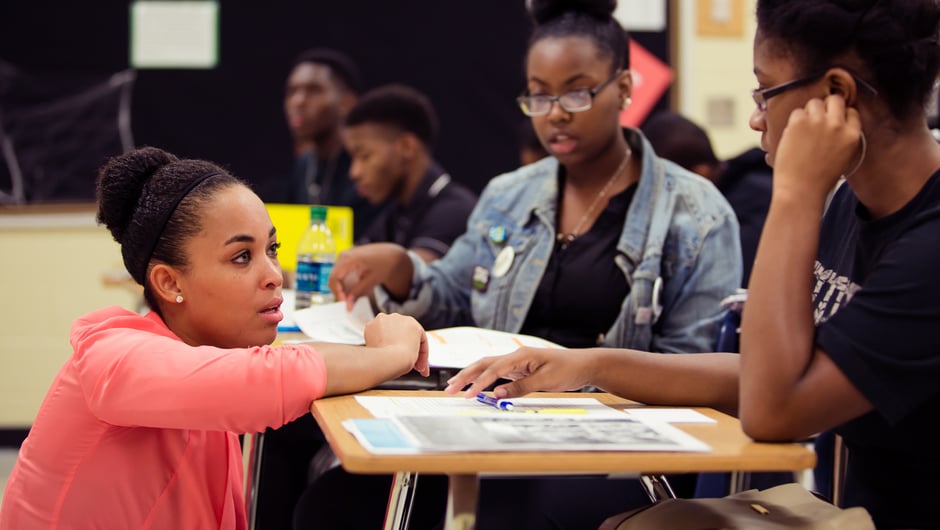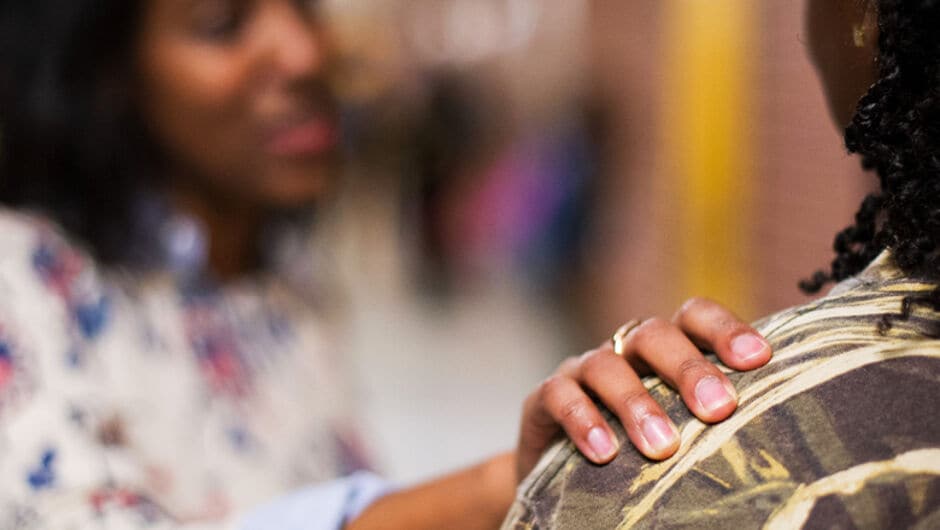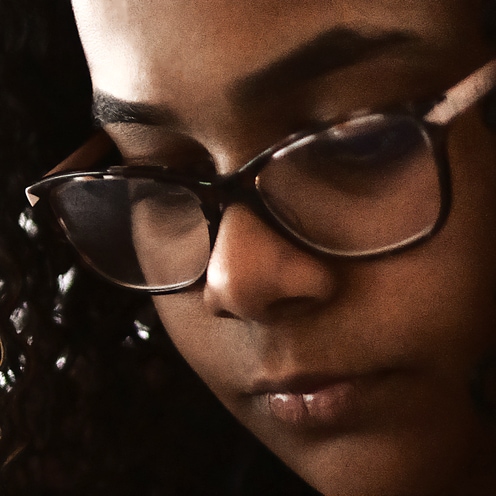
Creating A Path Toward Healing in the Classroom
Schools are helping students cope with the emotional toll of the pandemic through culturally responsive social-emotional support.
A year into the global pandemic, a picture has emerged of the psychological toll on students, families, and educators.
In national surveys, youth report feeling higher levels of anxiety and depression, and say that these feelings are the No.1 obstacle to learning, especially among students of color. Pandemic-related isolation is also putting many students at risk of ongoing mental health issues.
“We have tremendous grief happening in this country,” said Robin Gurwitch, a professor of psychiatry and behavioral sciences at Duke University during a press briefing. “That is a unique stressor. Children are experiencing grief in ways that are unprecedented.”
Psychologists say this grief encompasses many feelings, including the loss of social connections and life as it used to be. The long duration of the pandemic sets this crisis apart from others in recent decades.
The fact that there are many children who have been out of school for a year has a direct effect on them, says Meghan McDoniel (St. Louis ’10), a postdoctoral researcher studying early childhood development at Stanford University. “They are experiencing a unique and elongated stress that I don't think we’ve really seen quite to this extent before."
That’s the case for Ana Botero, a high school sophomore in Boston who says she has struggled with stress and anxiety during remote learning. “I’ve noticed that my mental health has been on another level, and it's never really been like that before,” she says. “I never really had issues until the pandemic started and it kind of forced me to evaluate myself a little more.”
Educators are also feeling the weight of cumulative stress, grief, and pandemic fatigue. At the same time, they are working to support their students’ needs, even in virtual spaces.
In a recent roadmap for school reopening from the Collaborative for Academic, Social, and Emotional Learning (CASEL), the authors urge school communities to deepen their social and emotional competencies and create equitable learning environments where healing from the past year’s traumas can take place. The authors are quick to point out that social-emotional learning (SEL) is not a panacea; it “offers a critical foundation for supporting students and adults in the midst of great uncertainty and stress, and a long-term path for sustaining thriving communities.”
Schools have adapted in tremendous ways in order to help students cope with the psychological impact of the pandemic. One way they are doing this is by integrating culturally responsive social-emotional supports throughout the remote school day. Educators are creating safe space for students to process trauma by focusing on empathy, strengths, family and community connections, and students’ potential to effect positive change.
Establishing Virtual Spaces for Healing
For many families at Rocky Mountain Prep in Colorado, the compound traumas of the pandemic, such as food insecurity, job loss, and challenges accessing remote learning, are testing their resilience, says Jenni Reese (Colorado ’08), the managing director of culture. The schools quickly stood up access to grab-and-go meals and devices for students to learn from home. Maintaining continuity of classroom wellness practices was also a big priority.
Before the pandemic, upper elementary students at Rocky Mountain Prep engaged in “Compass Circles,” a social-emotional learning framework developed by Valor Collegiate Academies that focuses on communication, self-awareness, and connection. When school buildings closed, teachers adapted the Compass Circles for the remote classroom, to preserve a sense of normalcy and routine.
Some classrooms continue to hold Compass Circles over Zoom, where students can see each other in gallery view. Each Circle starts with a deep breathing mindfulness exercise. Then students take turns checking in and sharing their current emotion. If needed, facilitators can check back with students about what they shared. Students also discuss their “badge work,” reflection work that focuses on identity, values, self-love, and connection. Circle closes with an opportunity for students to share appreciations.
The highly structured rituals around the Circle practice help maintain a safe space for students to be vulnerable and build connections, Reese says.
“Specifically with the pandemic, kids need space to share how they're doing,” she says. “When you hear someone else share how they're doing, and you connect with that, that in itself can be healing for kids and make them feel a little bit more safe and okay.”

Identity Affirmation as a Source of Strength
Before Impact Public Schools buildings closed last spring, students and their families frequently gathered for events celebrating their culture and to connect with each other. Such socializing mattered to the families, a large percentage of whom are immigrants and refugees living in Washington’s Puget Sound region.
School officials worked to ensure students and families had other opportunities to connect and receive support during the school day and in response to traumatic events. Impact schools also participate in Valor’s Compass Circle program and in the wake of the killing of George Floyd and racial protests, schools held Circles for students and families to process their emotions together.
“When our students are experiencing something incredibly hard at home and what they're hearing on the news and what's happening to society, to feel a part of a greater community in their classroom and in their school I think is more important than ever,” says Kayla Vickaryous (Oklahoma City ’13), who directs professional development for the Impact network and also writes and designs SEL programming for the school sites.
“Any time someone is experiencing pain, it is healing to remember the strength that comes from who you are and who your family is, what they've experienced and what makes them special and powerful.”
It was also important to find creative ways for students to engage in identity-affirming activities and reinforce their sense of belonging even if they could not be physically together, Vickaryous says. For example, Vickaryous designed a unit called “I Love Myself,” which encouraged students to express gratitude and focus on things they love and appreciate about themselves. In the winter, students took turns sharing family traditions they celebrate throughout the year, especially those that fall outside of the Eurocentric holidays. On Fridays, families can join students and teachers on Zoom to build community and learn how to model specific SEL habits at home.
“Any time someone is experiencing pain, it is healing to remember the strength that comes from who you are and who your family is, what they've experienced and what makes them special and powerful,” Vickaryous says.
And pandemic fatigue is a common challenge. That’s something Eesir Kaur (New York ’09) sees firsthand at Rocketship Public Schools, a national public charter network that serves K-5 students.
“Irrespective of whether you're a student, an adult, an educator, or a physician, I think it's cross-cutting racial lines, socioeconomic lines,” Kaur, who leads Rocketship’s humanities department, said of the pandemic fatigue. “It is taking a significant emotional mental health toll.”
Responding to the need for more social-emotional supports, teachers and leaders are working thoughtfully and collaboratively to create an experience for students that remains “magical and novel and brilliant,” Kaur says. Many of these experiences focus on affirming identity and strengthening family and community connections.
Families can join humanities classes on Zoom to read identity-affirming books and share their personal stories. One of Rocketship’s Milwaukee campuses held a virtual “hero day” and invited local nurses, doctors, firefighters, and other first responders who shared students’ backgrounds to join a Zoom class. Students dressed up as their heroes. For many, that meant putting on their parents' work uniforms and name badges.
“For our kids to be able to see that there are people who look like them who are doing things that they can then envision themselves doing later on in life is incredible,” Kaur says. A strong sense of belonging builds strength and confidence, a foundation that can help students cope through the pandemic, she says.
“Taking a broader view of why identity matters and why social belonging matters, I think it has a lot to do with being safe and feeling nurtured and feeling like I'm not the only person having these experiences,” Kaur says.
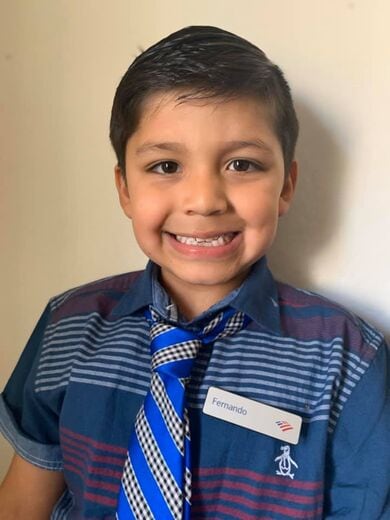
Building Resilience Through Relationships
Teachers are hungry for advice on how to build authentic relationships from a distance, says Erin Daugherty (South Louisiana ’10), the director of social-emotional learning at Mindful Practices, which provides curriculum and professional development for SEL practitioners.“It’s tough to do through a computer screen,” she says.
One strategy Daugherty recommends is weaving relationship-building opportunities into every class—and doing it consistently. Even simple things such as a quick ice-breaker or shout-out can help teachers get to know students and make students feel more connected during distance learning.
“That relationship-building piece is huge; it’s important to figure out what is actually motivating your students and make sure that you're making that a critical piece of your class,” Daugherty says.
Daugherty still stays in touch—through phone calls and texts—with students she taught years ago, including Ana Botero and Leilani Watson, who are now sophomores attending different Boston-area high schools.
Daugherty made space for “conversations about real-life” in her classroom, Botero says. Those conversations built a strong foundation of trust that remains to this day.
“Once you show kids that you care and that you are there for them, and you share a little bit of your experience as a human and you don't always go by the book, then that kid will want to open up and go to you when there's an issue,” Botero says. “You have that foundation to have those conversations."
Starting the school year online has made it more challenging to build relationships with her teachers and ask for help, Watson says. But, she says, she’s grateful for teachers who have made time before and after class to talk about the non-academic things.
“[Teachers] have to understand that the other stuff that happens either at home or out in the world affects the way we learn and deal with things,” Watson says. “And we're not going to be able to do our best learning if we're not comfortable in that classroom.”
Finding safe ways to maintain strong connections is one of the ways students and teachers at DreamHouse ‘Ewa Beach in Kalaeloa, Hawai’i, have been coping through the pandemic. Throughout the academic year, the school’s sixth and seventh graders participate in a program called LEAD, which focuses on leadership, identity, and social-emotional well-being, all through an Indigenous Hawaiian lens.
“We’re looking at what was lost due to COVID, incorporating strength in our culture, understanding each other, how we thrive, and how we live,” says Ryan Mandado (Hawai’i ’15), the school’s chief academic officer who helps design and lead the program.
DreamHouse leaders brought small groups of students back to school buildings for their LEAD block for a few afternoons a week this winter. The goal was to help students regain one of their biggest losses: relationships with each other and their community. It was the first time they had been together since March. So it was important to prioritize in-person time for interpersonal work while academics continued online, Mandado says.
“Everyone is going through so much right now,” he says. “We are focused on empathy and our connection to each other.”
During these sessions, students connected over shared grief: the pandemic, the loss of social connection, and seeing their parents struggle at home. One afternoon, they rode bikes to the nearby business center to interview community members about their pandemic challenges. After learning that some community members didn’t feel safe and others lacked hope, students began designing solutions. One group organized a donation drive and made COVID kits with hand sanitizer and masks. Another group painted colorful signs with inspirational messages and posted them along the roads near their school.
“Students come to school to feel connected,” Mandado says. “When you put students in teams where they have to understand what they're going through and then make connections to the community and come up with a solution, that really creates bonding and understanding that we are in this together.”
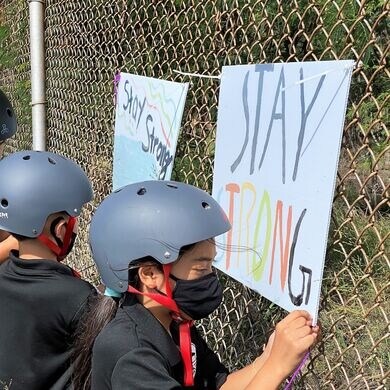
SEL & Social Justice: Building Skills to Lead Change
The interpersonal work that DreamHouse students are engaging in is not only focused on wellness; it provides them an opportunity to play an active role in helping their community heal—a theme that this generation of students will continue to grapple with in the wake of the pandemic.
As educators support students through the challenges of the past year, many are thinking about the intersection of social-emotional learning and social justice, and experiences that can build student empowerment and resilience.
“Teaching SEL within the sociopolitical context has a massive potential to help students promote their voices, to help them build lives of agency and choice,” Daugherty says. While teaching, Daugherty encouraged her students to use their SEL skills in real-life contexts. “These contexts are pushing for social change, equity, and justice,” she says.
Allison Cochran (Bay Area ’12), the associate director of social-emotional learning at Rocketship, has been working on integrating social justice standards into the network’s SEL programming. In many ways, the standards complement the work students are already doing and add in skills such as welcoming and respecting people’s differences and communicating across lines of difference.
“There's a lot in that question standard of how do you listen and hear other people, learn from one another, and recognize that there's a difference and be able to have that conversation,” Cochran says.
“It’s also about raising good citizens who can impact and affect change in their communities,” adds Kaur, who is also tying social justice standards into the network’s humanities curriculum. “How do we tie that back to our core values of respect, responsibility, persistence, and empathy? And how do our Rocketeers live out those values every single day and become change agents?”
Fifth grade students at one of Rocketship’s Nashville campuses recently created campaigns for social issues they are passionate about. After seeing their younger peers and siblings struggle to engage in remote learning, some students suggested the school make additional time for developmental play over Zoom to help younger students feel more connected to each other and their teachers. At Rocketship Los Suenos in San Jose, students developed personal commitments to standing up to racism and injustice and read them aloud to the class.
“Kids are really perceptive about the things that are happening around them,” Kaur says. “It's high time that we give our kids that space and that credibility and that trust that they can drive these really rich conversations that we so often think are only appropriate for adults.”
Helping students process the sociopolitical reality happening outside of school also requires looking inward.
Across the country, there is ongoing discussion about systemic racism, and the ways in which school practices and policies may uphold systems of oppression. As schools are developing meaningful, culturally responsive SEL experiences to meet students at this moment, they are also reexamining elements that may be perpetuating racism.
At Mindful Practices, Daugherty coaches school district leaders on developing culturally responsive social-emotional learning. This work can’t happen without educators first examining their own biases, she says.
They should “recognize and confront their own internalized racism, their defensiveness, white privilege, their sexism, and also implicit biases,” Daugherty says. “So they can better understand SEL in that context of all of these external forces working against Black and brown students of color.”
At Rocky Mountain Prep, Reese, the managing director of culture, is leading a committee to get input from teachers, students, and families on the school’s culture systems and policies, interrogating them through an anti-racist lens. She says learning from home has also provided an opportunity to think about student engagement through a new lens. As a result, schools have recently shifted some of the language they use around student behavior.
“Instead of discipline and behavior, we talk about student engagement and response to disengagement, putting more of the onus on the outcome being kids engaged and participating in learning,” Reese says.
Mandado, who works primarily with Native Hawaiian students, says the pandemic has elevated systemic racism, disproportionately affecting Native populations’ health and economic well-being. Creating social-emotional learning experiences that center students’ experience in this context is important.
“This is our opportunity to look at how we can avoid perpetuating systems of oppression in school and stay grounded in identity, community and what leadership looks like for our community and then provide our kids that opportunity,” Mandado says.
“Teaching SEL within the sociopolitical context has a massive potential to help students promote their voices, to help them build lives of agency and choice.”
Moving Forward: Balancing SEL with Academics
The vast majority of K-12 students in the U.S. have missed a year of in-person learning, social connection, and in-school supports. Students’ well-being has never been more fragile. Educators face a herculean balancing act: an immense need for social-emotional supports with urgency to address academic gaps.
For many educators, including Vickaryous, continuing to focus on SEL as a prerequisite for learning feels important moving forward, especially for kindergarteners.
“They just experienced school for the first time online and got comfortable with that,” Vickaryous says of kindergarteners. Now, after a year of remote learning and limited social interactions, they’re going to enter a physical school. “It’s going to take an immense amount of adjustment for all kiddos, but especially our youngest learners.”
At DreamHouse, students are still covering academics in virtual classrooms with the option to get in-person help a few days a week when they are in the school building for their LEAD program. Potential learning loss is very concerning and needs to be addressed, Mandado says. He also continues to make a case for keeping the focus on social-emotional learning while students are together in person.
“There's going to be quote-unquote gaps in the learning. But students are also experiencing a gap in interactions with their peers and the connections that we need to build right now,” he says. “For me, if we think that academics come before the social, emotional, and cultural understanding of our students, then we should not be teaching Indigenous children.”
Social-emotional learning and academics should complement each other, rather than feel like competing priorities, says Reese, who continues prioritizing dedicated time for students to engage in Compass Circles at Rocky Mountain Prep as students transition back to in-person learning. For Reese and many other educators, social-emotional well-being is foundational for students recovering academically as well as their long-term post-pandemic healing.
“What's most important is to ground yourself in what sets kids up for success academically,” Reese says. “If their basic needs aren't being met, it's going to be harder for them to find success within the academic world.”
“It's a marriage of both, but we have to be responsive to where each individual kid and family is at right now, which is a lot of work. But that's just what needs to happen.”
We want your feedback. Share your thoughts on this story or suggest other stories for us to pursue.
Sign up to receive articles like this in your inbox!
Thanks for signing up!
Content is loading...





